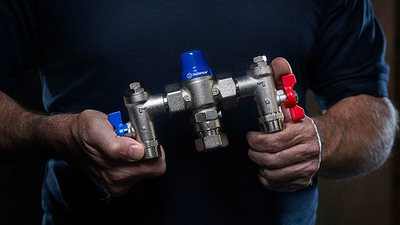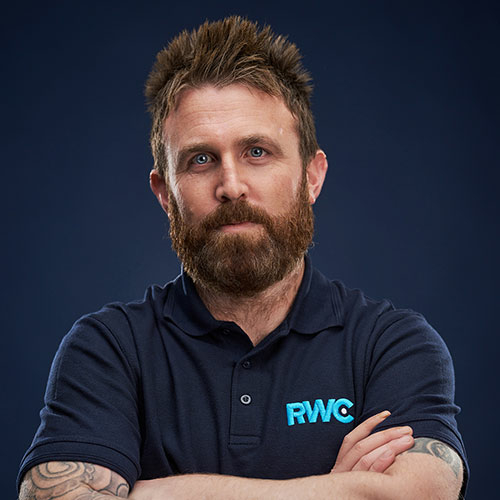The latest about Thermostatic Mixing Valves

Thermostatic Mixing Valves (TMVs) are a small but important part of domestic, commercial, and healthcare plumbing and heating systems. From keeping water at a safe temperature to helping protect against Legionella bacteria, TMVs are vital in keeping water systems and people safe.
But, to do this it’s important that they are installed and maintained correctly. In this blog, we will cover the latest you need to know about TMVs, including which TMV you need for your project, how to maintain them, and how they work with newer technologies such as solar power and heat pumps.
What TMV do you need for your building type?
As an installer you might be working on a variety of building types - from new builds to retrofits. When it comes to thermostatic mixing valves, domestic, commercial, and healthcare buildings all have different regulations you need to consider.
Domestic buildings:
Under Part G of the building regulations, it is outlined that water at a bath tap should be no higher than 48°C. This is due to the potentially high risk of scalding due to high bathing temperatures. It is also recommended that a TMV2 approved valve is installed to ensure that safety standards are maintained. It should be noted that these regulations have applied to all new properties since 2010.
Commercial applications:
Like domestic buildings, the TMV2 scheme also applies to commercial properties, like leisure centres. Under the TMV2 scheme in commercial buildings, one TMV can serve a group of outlets such as a series of basins or showers.
However, we would recommend you install one TMV per outlet, or one between two. This is because if a TMV malfunctions, then it’s easier to have just one or two outlets that can’t be used temporarily while you make repairs.
Healthcare settings:
In hospitals, clean and safe water is particularly important as those who use the outlets could be at a higher risk of scalding and could be deemed vulnerable. Under the TMV3 scheme, based on the NHS’s D08 specification, there is a requirement for the valves to maintain constant water pressure and temperature, regardless of the supply temperature or changes in pressure.
Do TMVs need regular maintenance?
The TMV2 and TMV3 regulations set out guidance for the maintenance of the valves, depending on where they are used. As an installer, you need to be aware of what maintenance TMVs need, based on where they’re installed. Here’s what you need to know:
- Domestic: The Part G Building Regulations don’t set out any specific requirements to service a thermostatic mixing valve, however we do recommend testing each TMV every year to ensure it’s still functioning correctly.
- Commercial: Under the TMV2 scheme, the valve needs to be serviced and tested annually to maintain the certification.
- Healthcare: Like the TMV2 scheme, the TMV3 scheme sets out rigorous maintenance requirements. After you first install the valve, it needs to be tested after six weeks and then if it passes, every six months after.

How do you correctly fit a TMV?
When you’re installing a TMV it’s important to make sure it’s installed within 2m of the water outlet it serves. This ensures that water can circulate within the system at temperatures above 60°C to help prevent Legionella bacteria from breeding in the pipework but can still be a safe temperature at the outlet.
What’s the latest about TMVs and new heating technology?
Many people are becoming more environmentally conscious, which is why technologies like solar power and heat pumps will become more common place. As an installer, you need to know how thermostatic mixing valves interact with these technologies.
When installing a TMV that is going to be used in combination with solar panels then it’s important to bear in mind that they run at higher temperatures than conventional energy sources. So, you need to install a TMV that can withstand temperatures that can reach as high as 90-100°C.
Like solar panels, heat pumps also run at much higher temperatures than conventional boilers. So, you need to make sure you’re using the right TMV for your project.
Need advice?
At RWC, our technical experts can help you choose the right valve for your project. Get in touch with them today.
